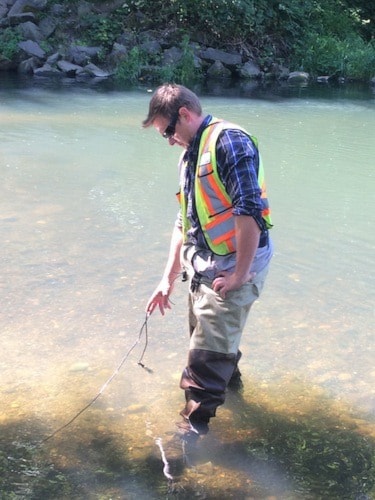Something occurred in the Hope Slough over the weekend that caused a sudden fish kill.
Floating fish were visible by Sunday on the water from Kinsman Park to Camp Slough, and from Menzies bridge to the Young Road bridge.
City of Chilliwack staff attended quickly on Sunday morning to the site on Hope River Road. A crew was dispatched, to clean up and investigate, as reports popped up early Sunday on social media with local residents expressing concern about the historic slough.
City staff now say they believe a large volume of slough water "that was poorly saturated with dissolved oxygen, passed through the area for a sustained period."
 It could have been an upstream algae bloom. Low dissolved oxygen as a direct upshot of algae blooms is quite common this time of year on some waterways.
It could have been an upstream algae bloom. Low dissolved oxygen as a direct upshot of algae blooms is quite common this time of year on some waterways.
"While an event of this nature would be considered a provincial or federal matter, the city was happy to clean up the dead fish on Sunday so that residents would not be left waiting with the smell until Monday," was the response about why staff were able to move so quickly.
Area resident Ian Stephen heard about it on social media and grabbed his stream-keeping gear to test the water. He headed to the bridge at Menzies, near Hope River Road, to get a look at it after 2 that afternoon.
He's been working with WaterWeath Project for a while now, looking at protecting local waterways from various impacts, and could see had "something fairly serious," had happened in the Hope Slough.
He'd never heard of a fish kill in that waterway. The last time an incident was reported was in 2013 from Sardis Park pond.
Two city employees responded to the fish kill report at 11:15 a.m. by attending the slough, as accessed by Kinsman Park, reported staff.
They began the assessment by collecting dissolved oxygen data. Dissolved oxygen was found to occur at 27% which is "marginal but within parameters to sustain fish survival," according to the city report.
Slough temperature was 16.5C.
 They collected :
They collected :
Large-scale Sucker: 3
Sculpin: 159
Peamouth Chub: 2
Coho juvenile: 5
Redside Shiner: 2
Crayfish: 5
Pacific Lamprey: 1
Northern Pikeminnow: 8
Although some observers talked about seeing a sheen on the water, the city crew did not note any evidence of it.
Staff were in contact with Ministry of Environment to report the event, and they reportedly agreed, that it was most likely "a low dissolved oxygen plume," said city officials.
